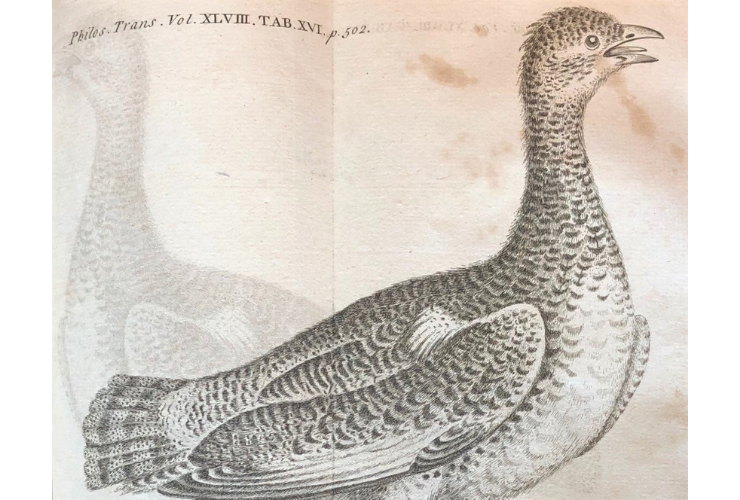
WE-20180654 Philosophical Transactions of the Royal Society of London, 1758, vol. 48
In part five of our ABC blog series, we continue to explore the Wenner Collection using vocabulary defined in John Carter and Nicholas Barker’s classic book, ABC for Book Collectors. Today we are highlighting the letters, O, P, and Q. You can read the entirety of our ABC series here.
O is for Offset
"The accidental transfer of ink from a printed page or illustration to an adjacent page. This may be caused either from the sheets having been folded, or the book bound, before the ink was properly dry, or from the book being subsequently exposed to damp. Offset from engraved or other plates on to text, and from text on to plates, is commoner, and also much more disfiguring, than offset from text on to text. Text offset occasionally provides valuable bibliographical evidence, since it usually derives from the very earliest stage in the assembly of the printed sheets into a book. And some of the neatest deductions have been made from the offset, not from one page to another of an individual copy, but from the offset on a page of one book from printed sheets belonging to another which happened to be stacked with it at the printer’s. (The use of the word offset applied to modern photolithography is not likely to occur in booksellers’ catalogues; but the collector should be aware of it.)"
WE-20180654 Philosophical Transactions of the Royal Society of London, 1758, vol. 48
One method of preventing offset is to insert a sheet of tissue paper opposite an illustrated page. The tissue paper acts as an extraordinarily thin sponge and soaks up any of the illustration's residual ink.
P is for Plate
"Properly, plates are whole-sheet illustrations, printed separately from the text; e.g. ‘plates spotted’, ‘with the rare extra plate of Leda and the Swan’, ‘lacks two of the twenty-four plates’. Illustrations printed on the text pages are called cuts (or, by printers, figures) unless they are described in greater detail (e.g. as engravings or wood-cuts). But the distinction is not always observed."
WE-20182389 Kosmos, 1932 by Willem de Sitter
While Carter and Barker's definition of plate broadly describes whole-sheet illustrations, the word also has secondary meaning. A plate can also represent a printing surface used in printing processes. Intaglio printing is one of the processes that uses metal plates to transfer ink to paper. Intaglio printing requires an intense amount of pressure to transfer ink from plate to paper. The pressure can leave indentations in the paper called plate marks1. This plate of Johannes Kepler is an example of Carter and Berker’s definition of the word.
Q is for Quarter Bound
"A book with leather back (spine), sides covered with cloth or paper, and no leather corners, is said to be quarter bound."
The pictured quarter bound text features a leather binding with dark canvas sides. Other popular variations in the Wenner Collection include leather bindings with marbled paper sides. Looking for a refresher on half and full bound bindings? Check out our first ABC blog post here.
References:
1 Gascoigne, B. (1986). How to identify prints: A complete guide to manual and mechanical processes from woodcut to ink jet. New York, NY: Thames and Hudson.
Add new comment